In an era when “bigger is better” has long dominated sports facility planning, a counterintuitive trend is emerging across college and professional athletics: stadiums are deliberately getting smaller. Northwestern University’s new Ryan Field will hold just 35,000 fans instead of the previous 47,130—a 25.7% capacity reduction despite an $850 million price tag. The Buffalo Bills are downsizing from 71,608 to 62,000 seats. Florida State reduced Doak Campbell Stadium from 79,560 to 67,277. Even basketball programs like Baylor are embracing intimacy over scale, replacing a 10,284-seat arena with a 7,500-seat facility.
This comprehensive guide examines why smaller college sports stadiums represent the future of athletic venues, what benefits institutions realize from capacity reductions, how this trend impacts athletic recognition and tradition, and what lessons schools of all sizes can apply when planning facility improvements and celebrating athletic achievement.
Understanding the Smaller Stadium Movement
The shift toward reduced stadium capacity contradicts decades of conventional wisdom in college athletics where prestige often correlated directly with seating numbers. Understanding what’s driving this reversal requires examining multiple converging factors.
The Historical Context: Bigger Was Better
For most of college sports history, stadium expansion represented progress and ambition. Schools competed to build the largest venues, viewing massive capacity as evidence of program prominence and community support. Michigan Stadium’s 107,601 capacity became a source of pride—tangible proof of the Wolverines’ cultural significance. Penn State, Ohio State, Texas, and other programs similarly invested in expansive facilities that could accommodate entire communities for Saturday games.
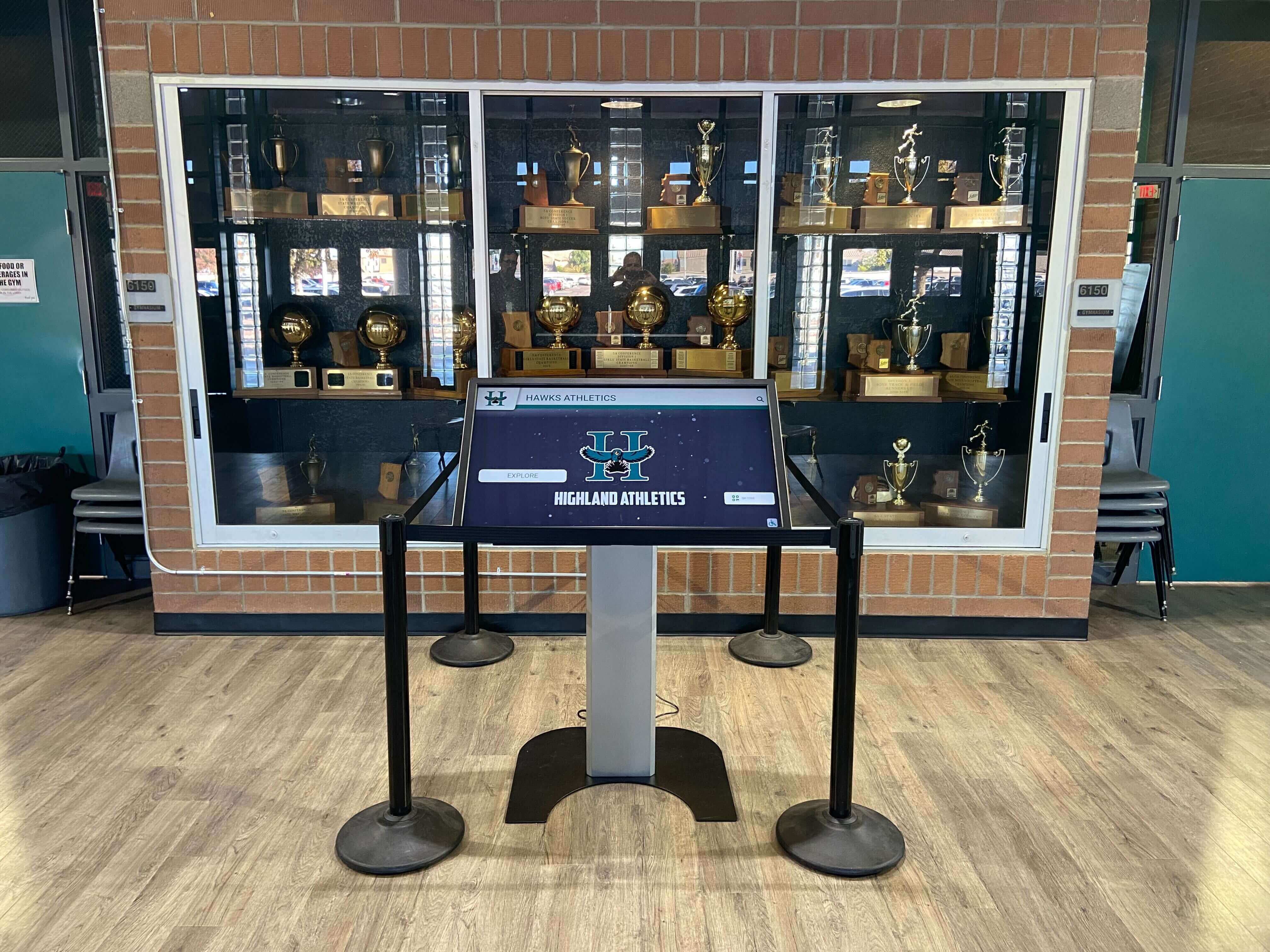
This expansion mindset made sense when television coverage was limited, ticket prices were modest, and attending games represented one of few ways to experience college sports. Schools prioritized accessibility over exclusivity, building facilities that maximized community participation rather than per-capita revenue.
The Tipping Point: When Attendance Started Declining
Multiple factors converged in recent decades to challenge the big-stadium model. College football attendance declined for seven consecutive seasons leading up to 2020, hitting its lowest levels in decades. Even powerhouse programs noticed thinning student sections and significant unsold inventory for non-marquee games.
Several drivers accelerated this decline. High-definition televisions and streaming services delivered superior viewing experiences for many fans who preferred watching from comfortable homes rather than navigating parking, crowds, and weather. Rising ticket prices made casual attendance prohibitively expensive for many families who previously attended multiple games annually. Game-day experiences often felt outdated compared to modern entertainment options competing for consumer attention and discretionary spending.
Perhaps most significantly, younger generations showed different consumption preferences than their parents, favoring flexibility and comfort over tradition and communal suffering through four-hour games in uncomfortable bleachers.
Strategic Response: Smaller, Better, More Profitable
Rather than continuing to build capacity that remained empty for most games, forward-thinking programs began reconceptualizing what stadiums should accomplish. The new paradigm prioritizes creating exceptional experiences for fans who do attend rather than accommodating maximum bodies. This shift fundamentally changes stadium economics.
Northwestern’s temporary 12,000-seat stadium already generates four times the revenue of the old 47,000-seat Ryan Field through premium seating and enhanced experiences. This dramatic difference illustrates how modern stadium planning emphasizes per-fan spending over total attendance. Quality trumps quantity when strategic objectives shift from cultural accessibility to financial sustainability and competitive atmosphere.
Why College Sports Stadiums Are Getting Smaller: The Key Drivers
Understanding the specific factors motivating capacity reductions helps schools of all sizes apply relevant insights when planning their own facility improvements.
Enhanced Fan Experience and Comfort
The most frequently cited justification for smaller stadiums focuses on dramatically improving the game-day experience for attendees who pay premium prices.
Proximity to Action: Reduced capacity enables every seat to be closer to the field. Northwestern’s leadership emphasized that their worst seat will be 100 feet closer to the field than the most expensive seat at Michigan’s Big House. This proximity creates more immersive viewing experiences where fans feel connected to the action rather than watching from distant upper decks where even binoculars barely help.
Improved Sightlines: Modern stadium designs incorporate steeper seating angles and increased row heights creating unobstructed views from virtually every position. Northwestern promises “better-than-TV” sightlines—a bold claim reflecting how seriously programs take viewing quality. These enhanced sightlines employ techniques from cutting-edge venues like the $2.3 billion Las Vegas Sphere, though admittedly less disorienting for those with height sensitivities.

Expanded Personal Space: New stadium designs nearly double square footage per fan compared to traditional facilities. Instead of cramped bleachers where fans squeeze shoulder-to-shoulder, modern venues provide actual seats with armrests, cup holders, and legitimate leg room. When Yankee Stadium opened in 2009 with reduced capacity, representatives explained: “The reason for reduced capacity is to create a better in-venue experience. Bigger seats, more leg room, larger concourses, more intimacy.”
Premium Amenities: Smaller stadiums concentrate resources on higher-quality amenities rather than spreading limited budgets across massive footprints. Enhanced club spaces, premium lounges, improved food and beverage options, upgraded restrooms, and sophisticated hospitality zones become economically feasible when serving 35,000 fans instead of 75,000.
Acoustic Atmosphere and Home-Field Advantage
Beyond comfort, reduced capacity creates tangible competitive advantages through enhanced acoustics that amplify crowd noise into genuine home-field advantages.
Sound Concentration: Bringing fans closer together and covering seating bowls with canopies that trap and reflect sound creates dramatically louder environments. Baylor’s 7,500-seat Foster Pavilion deliberately targets a “Cameron Indoor-like experience” where deafening noise intimidates opponents and energizes home teams. Athletic directors explicitly describe designing venues that remain “packed for games” rather than half-empty most nights.
Energy Density: Full stadiums generate electric atmospheres that half-empty venues never achieve regardless of absolute attendance numbers. A sold-out 35,000-seat stadium creates more intimidating environments than 35,000 fans scattered across a 70,000-seat facility. This psychological reality drives programs to match capacity with realistic attendance expectations rather than aspirational hopes.
The competitive advantages of superior atmosphere shouldn’t be underestimated. Home-field advantage in college football correlates measurably with crowd noise levels. Programs investing in acoustic design deliberately engineer competitive edges that persist season after season.
Financial Optimization and Revenue Maximization
While experience improvements dominate public messaging, financial considerations provide equally compelling motivations for capacity reductions.
Premium Seating Economics: Victor Matheson, sports economist at Holy Cross, identifies return on investment as the primary driver. He uses the Boston Celtics as an example: two folding chairs on the floor at TD Garden generate as much revenue as an entire upper deck section. This dramatic revenue concentration explains why programs willingly sacrifice thousands of cheap seats to add hundreds of premium positions.
Northwestern’s new Ryan Field will reserve only 10% of seats for premium clubs and suites, yet these exclusive areas are expected to generate 40% of total stadium revenue. This disproportionate revenue concentration makes smaller stadiums with higher premium ratios more profitable than larger facilities dominated by general admission seating.
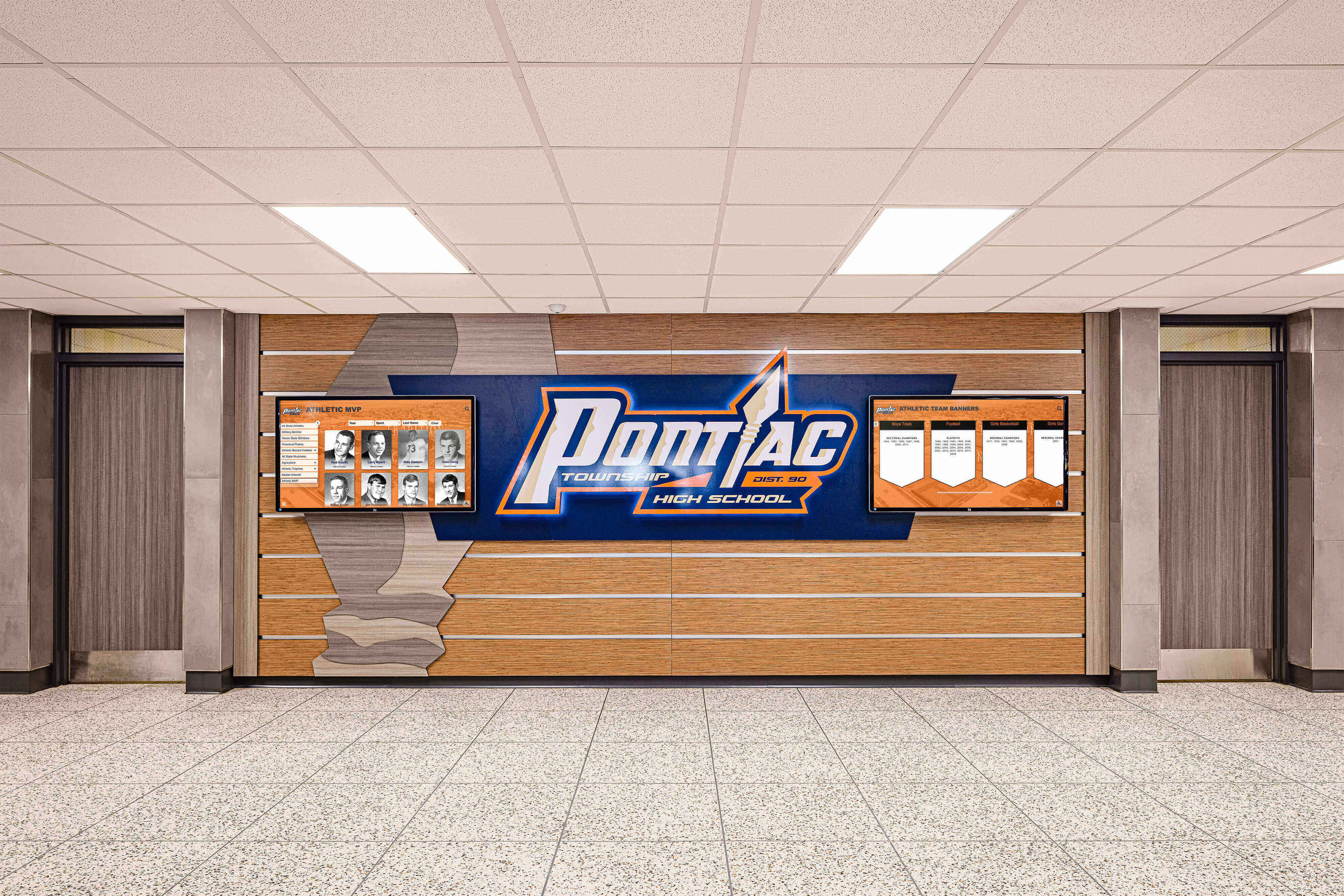
Operational Efficiency: Smaller facilities cost less to staff, maintain, and operate on game days. Reduced security requirements, fewer concession stands, smaller cleaning crews, and decreased utility consumption create ongoing savings that accumulate substantially over decades. These operational efficiencies improve profitability even before considering revenue advantages.
Dynamic Pricing Opportunities: Smaller capacity enables more sophisticated pricing strategies similar to airline yield management. When supply becomes constrained, programs can implement dynamic pricing that adjusts ticket costs based on demand, opponent quality, and purchasing timing. Scarcity creates pricing power that unlimited inventory undermines.
Avoiding Empty-Seat Embarrassment
Beyond financial and experiential considerations, programs want to avoid the public relations problems created by visibly empty stadiums during broadcasts.
Visual Perception: Empty seats communicate declining interest and failing programs regardless of actual attendance numbers. A 40,000-person crowd looks impressive in a 42,000-seat stadium but appears embarrassingly sparse in an 80,000-seat facility. Television broadcasts magnify these visual messages, potentially impacting recruiting, fundraising, and public perception.
High-profile programs have acknowledged this challenge publicly. In 2020, Alabama reduced Bryant-Denny Stadium’s 101,000 capacity by replacing student bleachers with a massive video board after Coach Nick Saban criticized student no-shows. This high-profile acknowledgment validated what many programs privately recognized: right-sizing capacity prevents embarrassment while creating better atmospheres.
Social Media Impact: In the era of viral moments, empty stadiums become internet fodder that programs desperately want to avoid. Every wide-angle shot revealing vast empty sections potentially becomes next day’s storyline rather than focusing on game action. Programs increasingly recognize that perception management requires matching capacity to realistic demand.
Multi-Purpose Venue Versatility
Modern stadiums must justify their enormous capital investments through year-round utilization rather than serving as expensive facilities used for seven home football games annually.
Concert and Event Hosting: Northwestern explicitly designed Ryan Field for concerts, festivals, and special events during the 358 days annually when football isn’t being played. Versatile, multi-purpose designs accommodate diverse events more effectively than single-purpose football stadiums optimized only for athletic competition.
Importantly for concert promoters, smaller venues often provide better acoustic experiences than cavernous stadiums. Ryan Field will likely become a premier concert venue in the Chicago area precisely because its 35,000 capacity creates more intimate experiences than the 107,000-seat Big House where thousands of “bad seats” inevitably exist for musical performances.
Community Programming: Beyond commercial events, right-sized stadiums become realistic venues for community programming, regional championships, high school playoff games, and other activities that would feel lost in 100,000-seat facilities but work perfectly in 35,000-seat venues.
The Impact on Athletic Tradition and Recognition
As stadiums shrink and modernize, athletic departments must reconsider how they preserve tradition, recognize achievement, and maintain connections between past glory and present success.
Preserving History in Modern Facilities
New stadium construction raises important questions about how to honor decades or centuries of athletic achievement accumulated in venues being demolished or fundamentally transformed.
Historical Continuity Challenges: Traditional stadiums often accumulated recognition elements organically over decades: championship banners hanging from rafters, retired jerseys displayed on walls, trophy cases filled with decades of hardware, plaques honoring All-Americans and hall of fame inductees, and historical markers commemorating significant moments. When stadiums are rebuilt, all these recognition elements require intentional preservation and reimplementation.
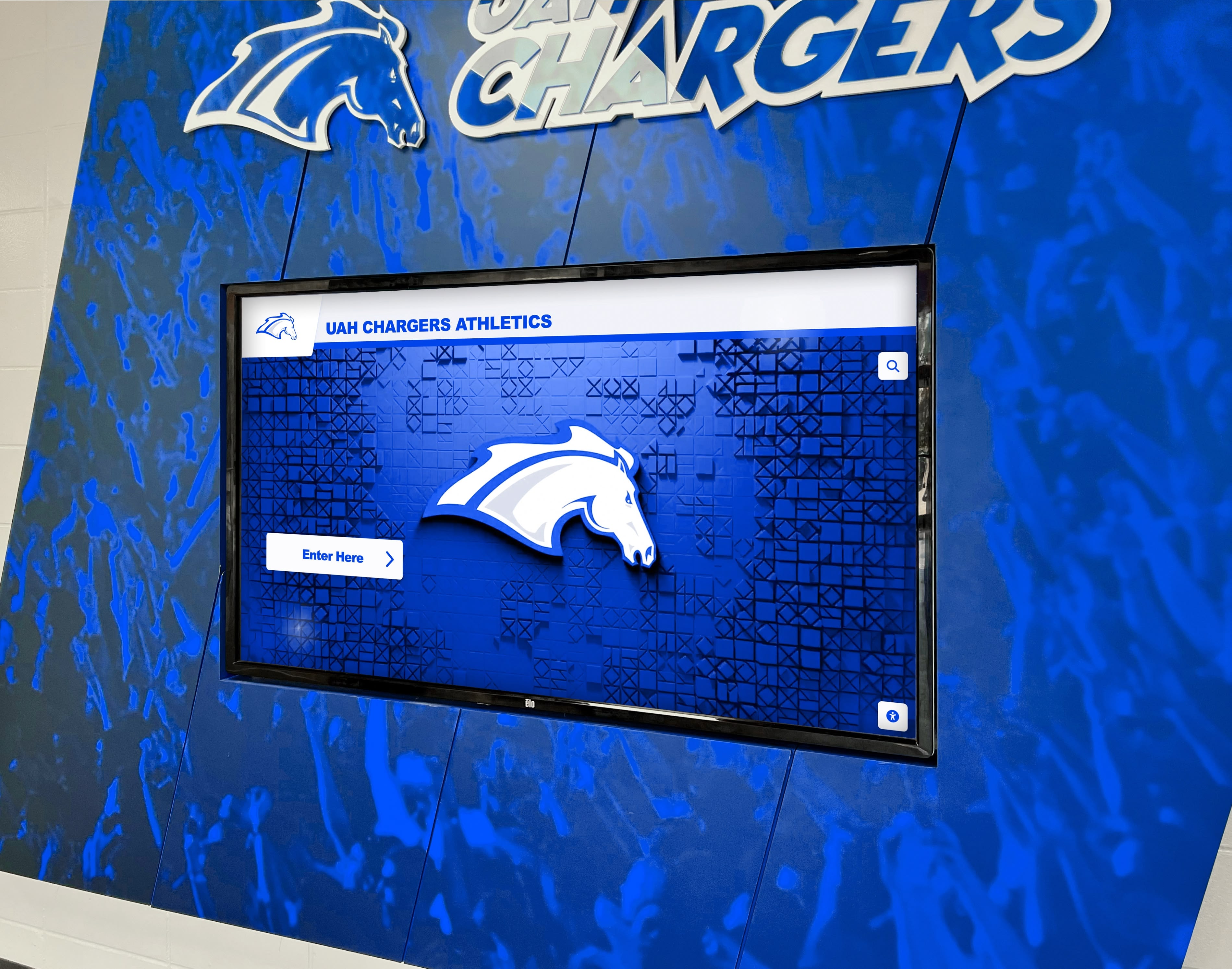
Schools demolishing or significantly renovating stadiums face critical decisions about what historical elements to preserve, how to integrate tradition into modern designs, and what stories to emphasize when reimagining recognition programs for new facilities.
Digital Recognition Solutions for Modern Venues
Modern stadium designs increasingly incorporate digital recognition displays that solve space constraints while creating more engaging historical storytelling than traditional static plaques.
Unlimited Recognition Capacity: Physical space limitations in smaller stadiums make comprehensive historical recognition challenging through traditional approaches. Digital hall of fame systems provide unlimited capacity to recognize every championship team, All-American, record holder, and significant contributor across a program’s entire history without requiring vast physical gallery spaces.
Rich Multimedia Storytelling: Digital platforms enable video highlights, photo galleries, detailed statistics, and extensive narratives that bring historical achievements to life far more effectively than engraved plaques. Younger fans who never witnessed past glory can experience championship moments through actual game footage rather than merely reading about accomplishments decades later.
Interactive Exploration: Touchscreen interfaces allow fans to search for specific athletes, browse by era or sport, filter by achievement type, or discover unexpected connections across program history. This interactivity creates engagement that static displays never achieve, transforming recognition from passive viewing into active discovery.
Flexible Updates: As programs continue accumulating achievements, digital systems accommodate new additions instantly through software updates rather than requiring physical construction. This flexibility ensures recognition programs remain current rather than becoming frozen snapshots of specific moments.
Solutions like Rocket Alumni Solutions provide specialized platforms designed specifically for athletic recognition that integrate seamlessly into modern stadium environments while preserving comprehensive institutional history.
Balancing Premium Experience with Tradition Access
The shift toward premium-focused smaller stadiums raises important questions about maintaining accessibility to athletic tradition and recognition for all fans rather than exclusively serving elite ticket holders.
Inclusive Recognition Placement: Strategic recognition display placement ensures all fans regardless of seating category can access institutional history. Locating interactive hall of fame displays in main concourses, entrance areas, or public spaces rather than exclusive club areas demonstrates commitment to shared tradition rather than privatized nostalgia.
Online Companion Platforms: Complementing physical stadium recognition with online hall of fame platforms accessible to anyone, anywhere extends historical access beyond those who can afford game tickets. This omnichannel approach democratizes tradition while maintaining premium in-stadium experiences.
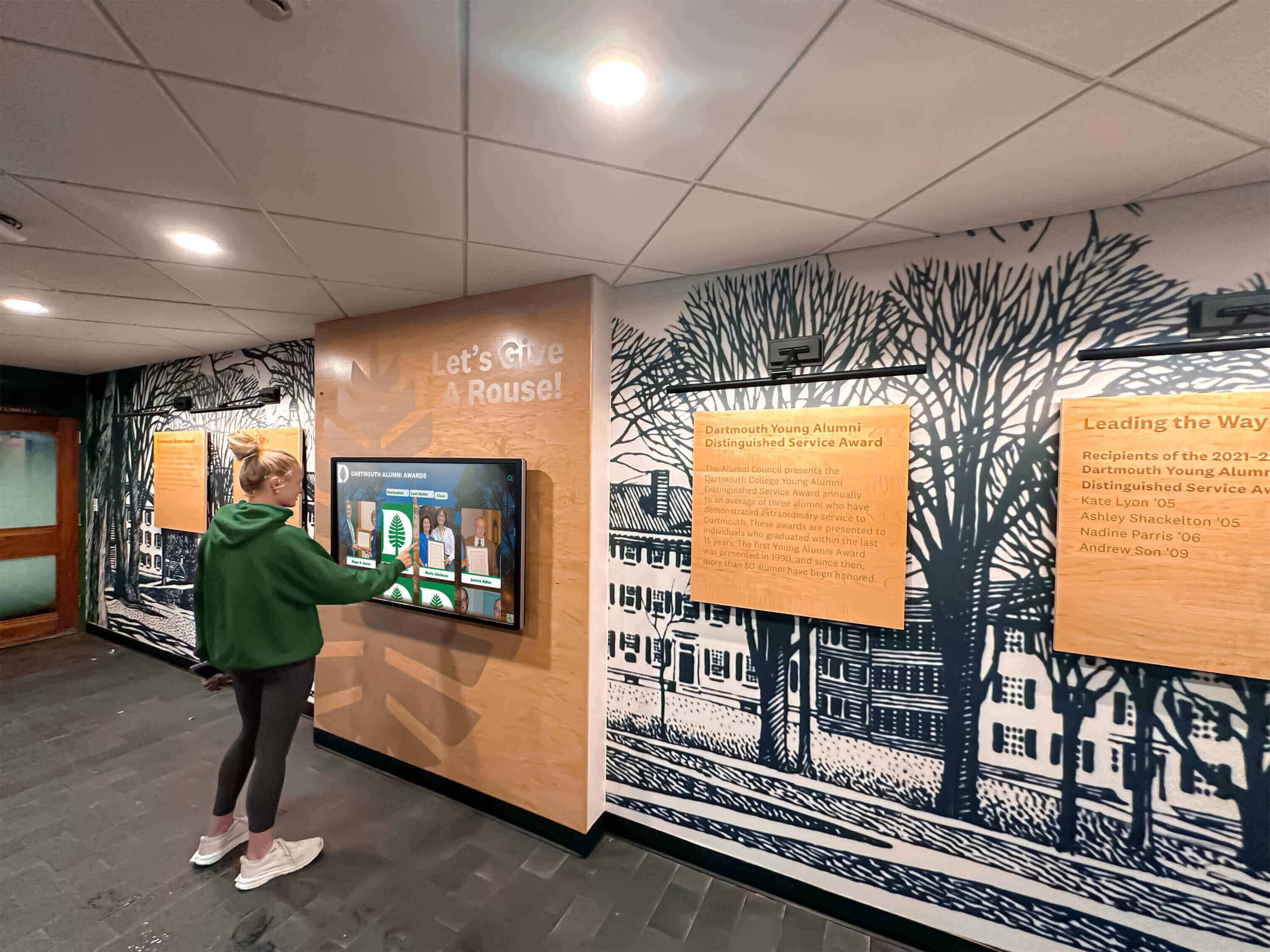
Community Connections: Thoughtful recognition programs maintain connections between current premium-focused venues and the broader communities that supported programs through less commercially sophisticated eras. Honoring multi-generational fan families, recognizing significant donors across financial levels, and celebrating community contributions alongside athletic achievement builds inclusive pride despite changing economic realities.
Lessons for Schools of All Sizes
While most schools will never build $850 million stadiums regardless of capacity, the principles driving the smaller-stadium trend offer valuable insights for institutions at every level planning facility improvements or recognition programs.
Right-Sizing Facilities to Actual Demand
Schools considering new construction or significant renovations should honestly assess realistic attendance patterns rather than building for aspirational crowds that rarely materialize.
Honest Capacity Planning: Many schools built facilities during eras of peak attendance that no longer reflects current reality. Right-sizing renovations or replacements to match contemporary demand prevents the embarrassment and operational inefficiency of perpetually half-empty venues.
Phased Expansion Capability: When uncertainty exists about future attendance trends, designing facilities with expansion capability provides flexibility. Building for current demonstrated demand while engineering structures to accommodate future growth balances fiscal responsibility with optimistic possibilities.
Multi-Purpose Considerations: Even smaller schools should consider how athletic facilities can serve broader purposes beyond specific sports. Versatile designs that accommodate multiple sports, physical education classes, community events, and regional competitions maximize facility utilization and justify capital investments.
Prioritizing Experience Over Scale
Regardless of budget or competitive level, all schools benefit from prioritizing fan experience quality over facility scale when planning improvements.
Comfort and Amenities: Even modest renovations can dramatically improve fan comfort through better seating, enhanced restroom facilities, improved concessions, and basic amenities that communicate respect for attendees. These improvements often cost less than major structural expansions while delivering immediate satisfaction increases.
Atmosphere Enhancement: Strategic design choices can improve acoustic qualities and atmospheric energy without rebuilding entire facilities. School pride initiatives that engage student sections, improve sound systems, and create traditions contribute to atmosphere regardless of facility age or capacity.
Aesthetic Upgrades: Professional branding, quality signage, well-maintained facilities, and contemporary visual identity communicate institutional pride and professionalism. These improvements influence perception dramatically despite modest costs compared to major construction.
Modern Recognition Program Implementation
Schools at all competitive levels can implement modern recognition approaches that celebrate athletic tradition while embracing contemporary technology.
Digital Record Boards: Digital record boards provide dynamic, easily updated platforms for showcasing athletic records, All-Conference selections, championship teams, and milestone achievements. These systems cost a fraction of major facility renovations while dramatically improving recognition quality and engagement.
Comprehensive Historical Documentation: Many schools possess rich athletic histories that remain poorly documented and inaccessible. Systematic efforts to digitize historical records, photograph trophies and memorabilia, interview retired coaches and athletes, and compile comprehensive achievement databases preserve institutional memory before it’s lost forever.

Multi-Sport Equity: Recognition programs should celebrate excellence across all athletic programs rather than exclusively highlighting revenue sports. Comprehensive athletics recognition that honors achievements in Olympic sports, women’s athletics, and less prominent programs builds inclusive pride while acknowledging diverse forms of athletic excellence.
Alumni Engagement Integration: Effective recognition programs connect past athletic achievement with ongoing alumni engagement. Creating opportunities for retired athletes to mentor current teams, participate in recognition ceremonies, or contribute to historical documentation strengthens multigenerational community bonds that benefit both groups.
The Tradeoffs: What Gets Lost When Stadiums Shrink
While smaller stadiums offer numerous advantages, the transition involves genuine tradeoffs that deserve honest acknowledgment.
Affordability and Access Concerns
The most significant critique of smaller premium stadiums focuses on how capacity reductions affect ticket affordability and accessibility.
Pricing Pressure: Simple supply and demand economics suggest that reducing capacity while maintaining or growing demand inevitably increases prices. Buffalo Bills season ticket holders have protested being priced out of the new stadium despite decades of loyalty. Similar dynamics will likely affect Northwestern and other programs pursuing premium-focused approaches.
Demographic Shifts: When programs prioritize maximizing per-fan revenue over total attendance, fan demographics shift toward wealthier constituencies able to afford premium prices. This economic sorting may exclude families, students, and community members who previously accessed games through affordable general admission seating.
Cultural Implications: College athletics historically served democratic functions where community members regardless of socioeconomic status could participate in shared cultural experiences. Premium-focused venues risk becoming exclusive rather than inclusive spaces, potentially weakening community connections that historically sustained athletic programs.
Tradition and Scale Tensions
Part of college athletics’ appeal involves the sheer spectacle of massive crowds creating electric atmospheres. Downsizing sacrifices these scale advantages even while improving other experiential dimensions.
Big Game Atmosphere: There’s something uniquely powerful about 100,000 fans united in supporting their team that 35,000 fans cannot replicate regardless of acoustic engineering. For rivalry games, major matchups, and playoff competitions, massive capacity creates shared cultural moments involving entire communities rather than select subsets.
Historical Identity: For programs where stadium capacity became part of institutional identity—Michigan’s Big House, Penn State’s White Out crowds, Texas A&M’s 12th Man—downsizing would represent fundamental identity changes rather than simple facility updates. These programs may resist the smaller-stadium trend precisely because scale constitutes essential program character.
Long-Term Flexibility Questions
Once stadiums are built with specific capacities, changing course requires expensive renovations or complete rebuilds. Capacity reductions make irreversible commitments based on current conditions that may not persist indefinitely.
Demand Uncertainty: While current trends suggest declining attendance will continue, sports history shows cycles where interest waxes and wanes unpredictably. Programs reducing capacity bet that current downtrends represent permanent shifts rather than temporary adjustments. If interest rebounds significantly in coming decades, undersized facilities create missed revenue opportunities.
Competitive Implications: Conference expansion, playoff expansion, or scheduling changes might create scenarios where larger capacities would prove valuable. Programs locked into smaller facilities may face competitive disadvantages if attendance patterns shift favorably in ways currently difficult to predict.
The Future: Where the Trend Goes Next
The smaller stadium movement will likely continue expanding as more programs recognize the economic and experiential advantages of right-sized facilities.
Continued Renovations Across All Levels
Programs across Division I, II, III, and NAIA will increasingly embrace capacity reductions during renovation cycles. The economic logic proves too compelling for institutions to ignore, particularly as operational costs increase and attendance pressures persist.
Expect announcements in coming years from additional Power Four programs following Northwestern’s lead. Mid-major programs will similarly right-size facilities that were built during more optimistic attendance eras. Even high schools may reconsider building maximum-capacity facilities when renovating or replacing aging infrastructure.
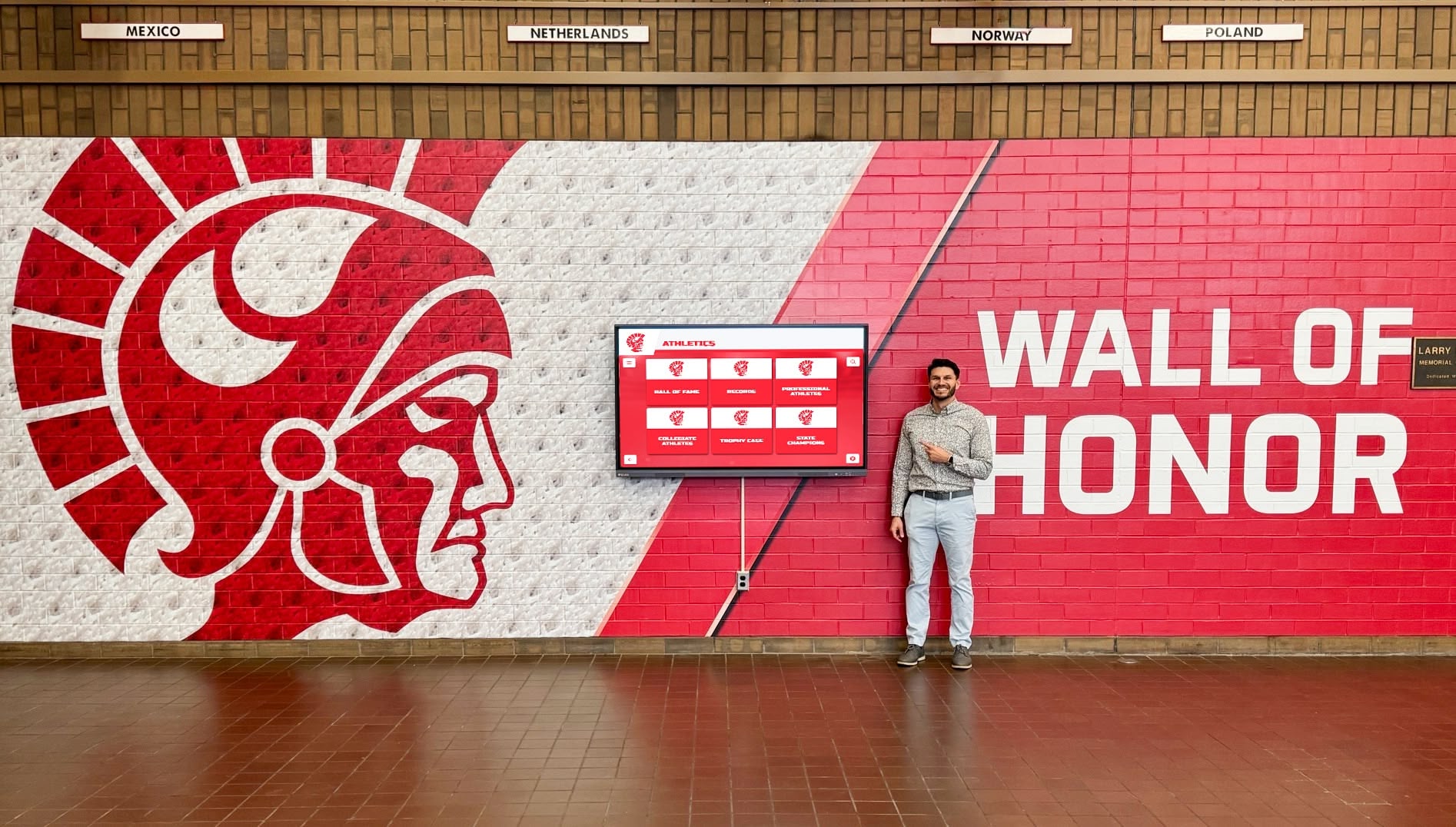
Technology Integration Acceleration
Future stadium designs will increasingly integrate sophisticated technology enhancing both game-day experiences and year-round facility utilization.
Enhanced Connectivity: Modern venues will provide superior WiFi and cellular connectivity enabling fans to remain connected to digital experiences even while attending live events. This connectivity supports social sharing, in-game statistics access, instant replay viewing, and complementary digital experiences that enhance rather than compete with live attendance.
Immersive Recognition Experiences: Advanced digital recognition systems will create increasingly immersive historical storytelling through augmented reality, 360-degree video, interactive timelines, and AI-powered content recommendations that personalize exploration based on individual interests.
Operational Intelligence: Sophisticated data analytics will optimize everything from concession inventory to traffic flow, creating smoother operations that improve satisfaction while reducing costs.
Recognition Program Innovation
As physical space becomes more constrained and expensive, athletic departments will invest more heavily in digital recognition platforms that preserve tradition while accommodating spatial limitations.
Schools will increasingly implement hybrid recognition approaches combining selective high-impact physical elements with comprehensive digital systems providing unlimited documentation capacity. This balanced approach honors tradition while embracing modern capabilities.
Touchscreen recognition displays will become standard features in renovated and new athletic facilities, positioned as essential infrastructure rather than optional enhancements. Programs will recognize that preserving institutional memory requires intentional investment in systems designed for long-term sustainability.
Conclusion: Smaller Venues, Bigger Experiences
The shift toward smaller college sports stadiums represents far more than simple capacity adjustments—it reflects fundamental reconceptualization of what athletic venues should accomplish in contemporary higher education. Rather than maximizing bodies in seats, modern stadium planning prioritizes creating exceptional experiences for fans who do attend, generating sustainable revenue supporting comprehensive athletic programs, creating competitive atmospheric advantages, and building facilities that serve multiple purposes throughout the year.
For institutions planning facility improvements regardless of scale or budget, the lessons prove clear: right-size capacity to realistic demonstrated demand rather than aspirational hopes, prioritize experience quality over facility scale when allocating limited resources, embrace modern technology for both operations and recognition, preserve athletic tradition through intentional documentation and storytelling, and maintain accessible connections to institutional history despite changing economic realities.
The athletic departments that thrive in coming decades will be those that honestly assess their contexts, make pragmatic decisions aligned with contemporary realities, and invest strategically in creating experiences that justify premium pricing while maintaining emotional connections spanning generations. Smaller stadiums with enhanced experiences may seem counterintuitive, but they represent sophisticated strategic responses to fundamental shifts in how fans consume sports and what they value in live attendance.
Schools ready to modernize athletic recognition programs—whether in conjunction with major renovations or as standalone initiatives—can leverage platforms like Rocket Alumni Solutions to preserve comprehensive institutional history while creating engaging experiences that connect past achievement with present success. In an era when stadium capacity is shrinking, the ability to recognize unlimited accomplishments through digital platforms becomes increasingly valuable for maintaining tradition and inspiring excellence.




































